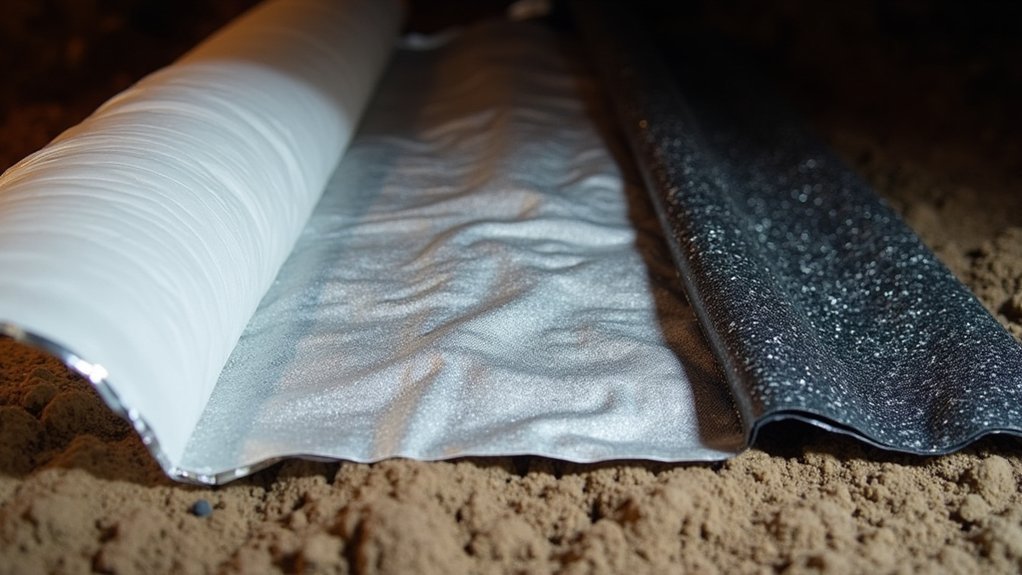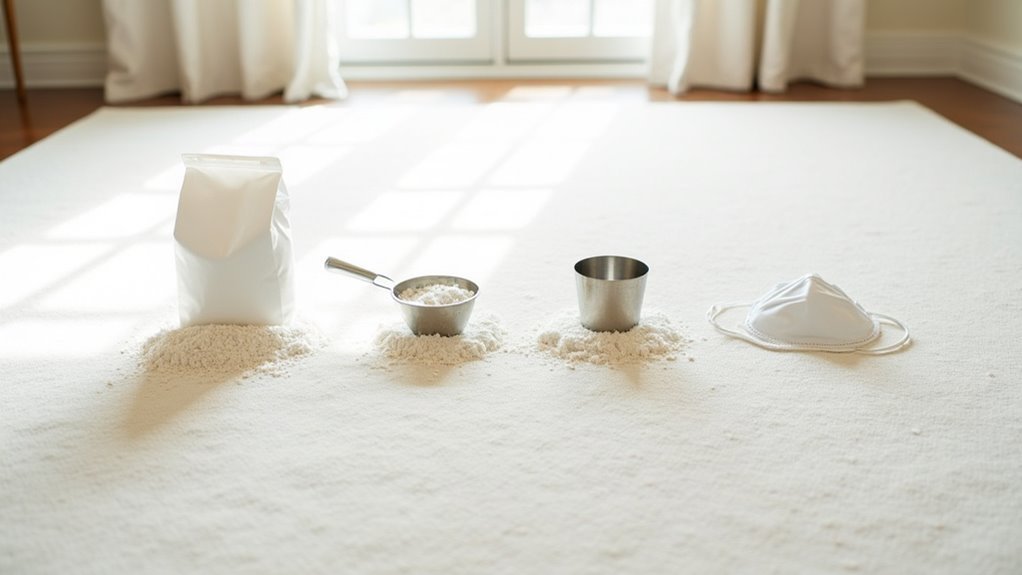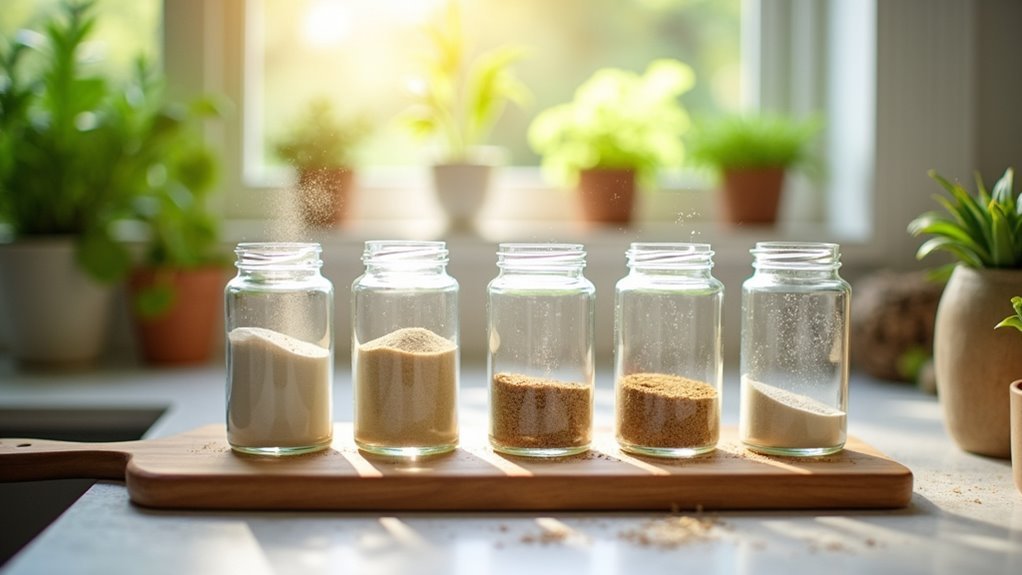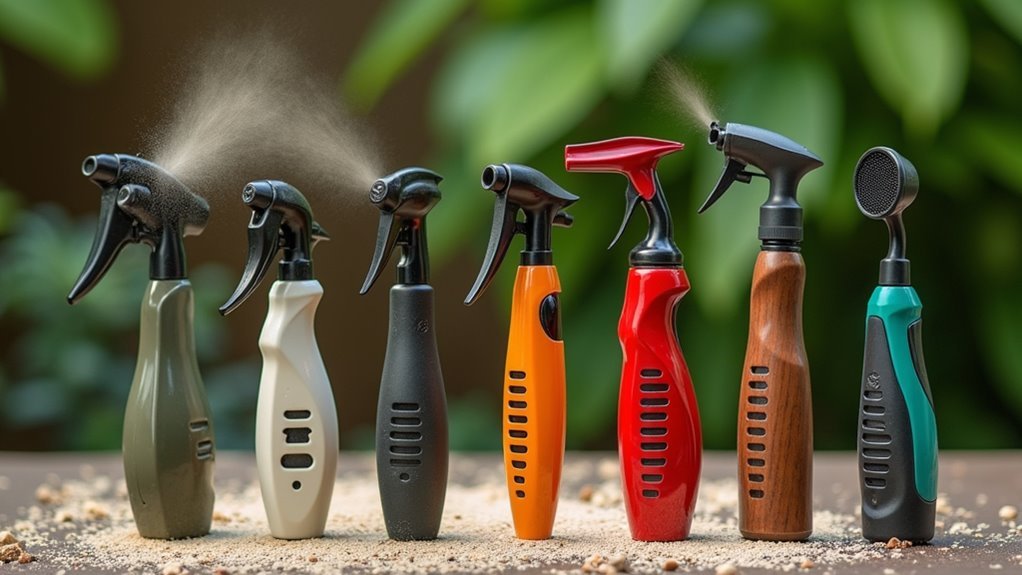You’ve probably noticed those musty odors or telltale signs of moisture damage in your home. The culprit? Your crawlspace might be inadequately protected. A proper vapor barrier isn’t just a piece of plastic—it’s your first line of defense against structural damage, mold growth, and pest invasions. Without effective moisture and pest control, you’re looking at potentially thousands in repair costs. So what separates the best barriers from the merely adequate ones? The answer might surprise you.
Aluminum Flood Barriers for Home Outside (7.9 Inch Height)
Homeowners in flood-prone areas will find these 7.9-inch aluminum flood barriers essential for preventing water damage to crawlspaces and basements. Made from rust-proof 5 Series aluminum-magnesium alloy, they’re twice as hard as traditional steel with an anodized layer that resists corrosion for up to ten years.
You’ll appreciate the quick, tool-free installation—one person can assemble them in just 3 minutes. The modular design adapts to various door widths, while the waterproof sealing strip blocks water up to 1.2 meters deep. For added safety, 360° reflective warning strips enhance visibility in dark, rainy conditions.
Best For: Homeowners in flood-prone regions who need quick-deploy, durable protection for doorways, garages, and basement entrances up to 7.9 inches in height.
Pros:
- Tool-free, 3-minute installation by a single person with modular design that adapts to various door widths
- Made from highly durable aluminum-magnesium alloy that’s twice as hard as steel and resists corrosion for up to 10 years
- Features 360° reflective strips for enhanced visibility during storms and nighttime conditions
Cons:
- Limited to protecting against floods up to 7.9 inches high, which may be insufficient for severe flooding events
- Requires proper storage space when not in use
- May not be suitable for uneven or irregular doorway surfaces that could compromise the waterproof seal
Crawl Space Vapor Barrier, 14 Mil Heavy Duty Plastic Sheeting
For those with critical moisture concerns in below-grade spaces, the Crawl Space Vapor Barrier’s 14 Mil Heavy Duty Plastic Sheeting offers professional-grade protection that stands out from standard options.
The double-sided Panda Film design gives you versatility—the black side blocks moisture and light while the white side reflects over 90% of light. You’ll appreciate how this 100% virgin polyethylene barrier resists tears thanks to professional-grade additives.
Covering 1,000 square feet (10ft x 100ft), it’s ideal for preventing wood rot, mold, and condensation in crawl spaces and basements. While some users report wrinkles from shipping, most praise its exceptional thickness and effectiveness.
Best For: Homeowners dealing with persistent moisture issues in crawl spaces, basements, or other below-grade areas who need a commercial-grade solution for long-term protection.
Pros:
- 14 mil thickness and professional-grade anti-tear additives provide exceptional durability compared to standard vapor barriers
- Versatile double-sided Panda Film with black side blocking moisture/light and white side reflecting 90% of light
- Extensive 1,000 sq. ft. coverage (10ft x 100ft) made from 100% virgin polyethylene for superior moisture resistance
Cons:
- Packaging issues frequently result in wrinkles and creases that complicate installation
- Mixed customer reviews (3.5/5 stars) suggest potential quality control or thickness consistency problems
- Higher price point compared to standard vapor barriers with similar advertised specifications
CrawlSpace-DIY Vapor Barrier Tape (3 Pack)
Tackling a crawl space encapsulation project requires reliable sealing solutions, and the CrawlSpace-DIY Vapor Barrier Tape 3-Pack delivers exceptional performance where other tapes might fail. This 12-mil, 4-inch wide polyethylene tape provides strong adhesion on various surfaces, from poly barriers to concrete blocks.
You’ll appreciate how this tape’s synthetic rubber-based adhesive maintains tackiness even in challenging conditions. It’s easily torn by hand for quick application, though scissors improve precision. The versatile tape works for sealing vapor barrier seams, creating dust barriers, and patching repairs. Keep extra rolls handy—you’ll find countless uses for this waterproof, durable solution beyond your crawl space project.
Best For: DIY homeowners undertaking crawl space encapsulation or moisture barrier projects who need a reliable, wide-format tape that adheres well to both poly sheeting and rough surfaces like concrete.
Pros:
- Extra-wide 4-inch format provides better coverage and stronger seals than standard tapes, making it ideal for vapor barrier seams
- Extremely tacky synthetic rubber adhesive maintains its grip even in damp or challenging environments
- Versatile enough for multiple applications beyond crawl spaces, including dust barriers, marine preservation, and construction projects
Cons:
- While tearable by hand, achieving clean, precise cuts requires scissors or a razor knife
- Premium price point compared to standard construction tapes, though justified by its thickness and performance
- Extremely sticky nature can make it difficult to reposition once applied to a surface
Factors to Consider When Choosing Crawlspace Vapor Barriers That Block Pests and Moisture
When selecting a crawlspace vapor barrier that effectively blocks both moisture and pests, you’ll need to evaluate multiple factors including material thickness, durability against burrowing creatures, and appropriate sealing techniques. Your installation experience will vary based on the product’s complexity, with some barriers requiring professional help while others offer DIY-friendly designs. You should also consider the environmental impact of your chosen barrier, as some materials offer eco-friendly alternatives without sacrificing performance.
Material Thickness Matters
While many homeowners focus solely on material type, the thickness of your vapor barrier plays an essential role in protecting your crawlspace from both moisture and unwanted pests. Thickness is measured in mils, with 14 mil barriers offering superior durability against punctures and tears compared to thinner options.
Barriers of at least 10 mil provide ideal moisture control, creating an effective seal that prevents dampness from seeping through. What’s more, thicker materials with anti-tear additives maintain their integrity even in extreme conditions, ensuring long-lasting protection.
You’ll find that investing in a thicker vapor barrier is cost-effective long-term, as it reduces expenses related to mold remediation, wood rot repairs, and pest control. The enhanced strength also creates a more formidable barrier against pests that might otherwise nest in your crawlspace.
Durability Against Burrowing Pests
Beyond thickness, your vapor barrier’s ability to resist determined pests can make or break your crawlspace protection strategy. Heavy-duty materials like 14 mil polyethylene offer superior resistance to tearing and puncturing from rodents and insects that might view your crawlspace as prime real estate.
Look for vapor barriers incorporating anti-tear additives, which greatly enhance toughness against gnawing pests. Double-sided film designs provide additional protection—one side blocks moisture while the other reflects light, deterring pests that prefer dark environments.
Don’t underestimate the importance of regular inspections. Even the best barriers can develop weak points over time. By checking for breaches quarterly, you’ll catch potential entry points before pests establish colonies. Remember, maintaining your vapor barrier’s integrity is essential for long-term crawlspace protection against both moisture and unwanted critters.
Proper Sealing Methods
Even the highest-quality vapor barrier won’t protect your crawlspace if it’s improperly sealed. To create an effective moisture and pest barrier, use 12 mil polyethylene tape specifically designed for vapor barriers. This tape’s pressure-sensitive adhesive conforms to irregular surfaces, creating a tight seal that prevents unwanted intrusions.
Always overlap vapor barrier sections by at least 12 inches at seams and edges. This redundancy considerably reduces the risk of gaps where moisture could penetrate or pests could enter. For thorough protection, don’t forget to seal the perimeter of your crawlspace and any pipe or wire penetrations with appropriate caulking or foam.
Remember to inspect your vapor barrier’s seals regularly. Even small breaches can compromise your entire system, so address any damage promptly to maintain continuous protection against both moisture and determined pests.
Installation Difficulty Level
Three key factors influence how challenging your vapor barrier installation will be: material thickness, crawlspace configuration, and available tools. Thicker barriers (such as 14 Mil) offer superior durability but require more effort to maneuver in tight spaces. You’ll find they’re heavier and less flexible than thinner options.
Crawlspace accessibility greatly impacts installation complexity—low clearance can transform a straightforward project into a challenging endeavor. Consider whether you’ll need additional assistance based on your space’s dimensions.
Look for vapor barriers with user-friendly features like modular designs with snap-on splicing that eliminate the need for specialized tools. Pre-cut sizes and clear instructions can greatly reduce frustration during DIY installation. Remember that proper seam sealing with specialized vapor barrier tape is essential for creating an effective moisture barrier.
Environmental Impact Concerns
While protecting your home from moisture damage is essential, the environmental footprint of vapor barriers deserves careful consideration. Most conventional barriers are made from petroleum-based polyethylene, contributing to fossil fuel consumption and associated extraction impacts.
You’ll find that many standard vapor barriers aren’t recyclable, ultimately ending up in landfills after their useful life. The manufacturing and transportation processes also generate significant greenhouse gas emissions, adding to your product’s carbon footprint.
Some barriers contain chemical additives that might leach into surrounding soil and groundwater, potentially harming local ecosystems. To minimize these environmental concerns, look for products that meet recognized environmental standards or carry eco-friendly certifications. These greener alternatives still provide effective moisture and pest protection while reducing your home improvement project’s environmental impact.
Cost Versus Longevity
Homeowners often face an essential decision when selecting crawlspace vapor barriers: opt for budget-friendly materials or invest in premium-quality barriers with longer lifespans. While initial costs may tempt you toward cheaper options, consider the long-term value proposition.
Higher-quality vapor barriers, particularly those made from 100% virgin polyethylene with anti-tear additives, can serve you reliably for up to a decade. The thickness matters considerably—14 mil barriers typically outperform thinner alternatives in durability and puncture resistance.
Products backed by warranties often indicate manufacturer confidence in longevity. Though premium barriers require a larger upfront investment, they typically reduce long-term expenses by minimizing replacement frequency and preventing costly moisture and pest damage. When evaluating options, balance your immediate budget constraints against the potential for future savings through extended performance.
Moisture Resistance Rating
When selecting a vapor barrier for your crawlspace, the moisture resistance rating serves as perhaps the most critical specification to evaluate. This rating is typically measured in mil thickness, with 14 mil or higher recommended for effective moisture control in your foundation space.
Look for barriers made of 100% polyethylene, as this material excels at preventing water seepage while maintaining structural integrity. Vapor barriers with anti-tear additives offer superior durability, ensuring they’ll withstand moisture exposure without deteriorating over time.
Double-sided designs provide enhanced functionality—one side blocks moisture while the other reflects light, improving overall humidity management. Don’t overlook weather resistance capabilities; your barrier should withstand extreme conditions like heavy rain and wind to effectively prevent mold and wood rot in your crawlspace.
Frequently Asked Questions
How Often Should Crawlspace Vapor Barriers Be Replaced?
You should replace your crawlspace vapor barrier every 15-20 years under normal conditions. However, if you notice tears, moisture damage, or pest intrusion, don’t wait—replace it immediately to maintain effectiveness.
Can I Install Vapor Barriers Over Existing Insulation?
You shouldn’t install vapor barriers over existing insulation in your crawlspace. It’s better to place the barrier directly on the ground surface, as covering insulation can trap moisture and potentially cause mold growth.
Do Vapor Barriers Affect Home Radon Levels?
Yes, vapor barriers can affect radon levels. When properly installed, they help block radon gas from entering your home through the soil. You’ll need specialized radon-resistant barriers for maximum protection.
Are There Eco-Friendly Vapor Barrier Options Available?
Yes, you’ll find several eco-friendly vapor barrier options made from recycled materials, biodegradable polymers, or natural fibers like jute. Look for barriers that are recyclable, PVC-free, and have low VOC emissions.
Should Vapor Barriers Be Installed in All Climate Zones?
No, you don’t need vapor barriers in all climate zones. They’re essential in humid regions but may cause problems in arid areas. Consider your local moisture levels and consult building codes before installation.





Leave a Reply